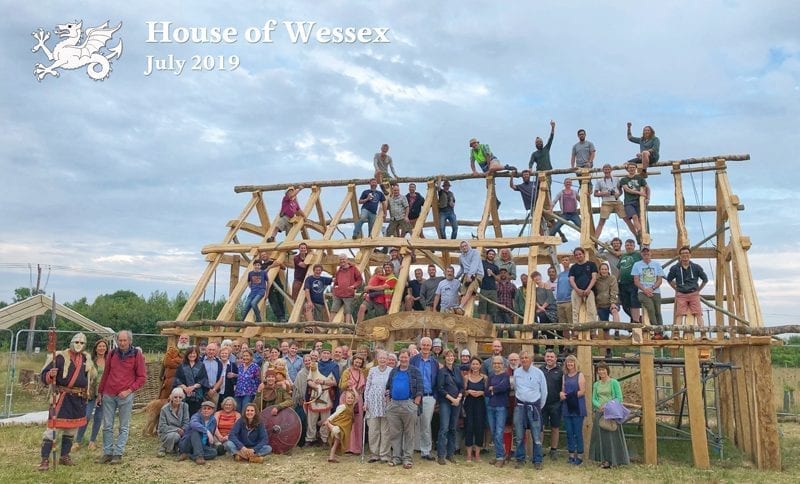Blenheim trees help reconstruct Anglo-Saxon Royal House

Eighty trees from woodland on the Blenheim Estate are being used to create an authentic reconstruction of an Anglo-Saxon royal house in Oxfordshire.
The oak, ash, birch, and sweet chestnut logs, which weighed a total of approximately 30 tonnes, were donated by the UNESCO World Heritage Site, to the Sylva Foundation, an environmental charity which promotes the role of woodland in society.
The trees’ timbers form the main framework for the Wessex House, a full-size reconstruction based on the exact footprint of a large Anglo-Saxon house discovered at the Sylva Wood Centre in Long Wittenham.
“Blenheim is extremely fortunate to have one of the most ancient oak woodlands to survive anywhere in Europe with some of our oldest trees dating back around a thousand years,” said Blenheim’s Estates Director Roy Cox.
“As part of our regular woodland management we look to conserve our ancient oak woodlands with carefully structured woodland thinning and plantings which means we have just the right sort of timber, so we’re pleased our trees are literally able to support such an exciting and ambitious project here in Oxfordshire and are very much looking forward to seeing the finished results.”
The oak framework was completed by volunteers from the Carpenter’s Fellowship earlier this month and the next stage will be thatching the roof and building the walls from wattle and daub.
The Wessex House is being built with the help of volunteers, supported by leading exponents in timber framing and construction. The experts themselves will learn through practicing treewrighting, working alongside an archaeological woodwork specialist, and members of a living history society to provide practical knowhow.
A key feature of the project is providing courses for the public to learn Anglo-Saxon building techniques including cleaving, hewing, making hurdles, mixing and applying daub, and thatching.
Lesley Best, Project Manager at the Sylva Foundation, said: “We are very grateful to Blenheim Estate for the wonderful donation of wood (30 tonnes!) used to reconstruct the Anglo-Saxon house in Long Wittenham.”
It was a wonderful to go back to the same woodland to select the trees where we previously worked with Blenheim on the OneOak project over ten years ago. We have worked closely with the forestry team at Blenheim and they have been incredibly helpful and supportive.”
The original building was discovered in autumn 2016, during an excavation by experts from the University of Oxford’s School of Archaeology, assisted by volunteers from its Department of Continuing Education.
Its large size (12x6m) and use of massive foundation trenches, indicated its high status. Rectangular cropmarks visible in aerial photos revealed it was one of at least three exceptionally large buildings in the area. Together, these buildings formed a ‘great hall complex’.
The building’s age, dimensions, and location, all point to its importance for the Wessex Kingdom – perhaps even a royal residence.
Sylva Foundation is an environmental charity working across Britain to help forests thrive – for people and for nature. It operates four main programmes, Science, Education, Forestry and Wood. The organisation was founded in 2009 by chartered foresters passionate about the role of woodland in society. They work to influence, educate and support people who work with trees and who care for them now and in the future. www.sylva.org.uk



